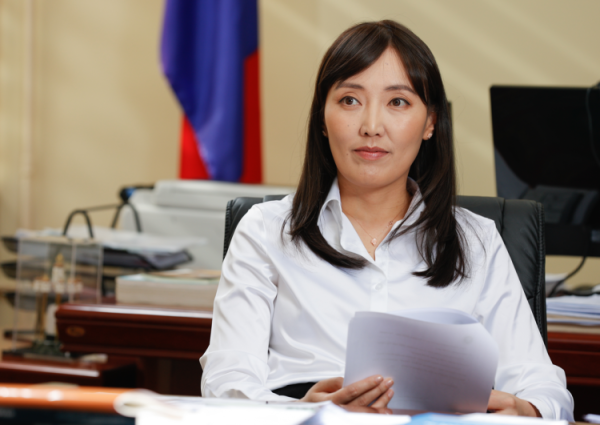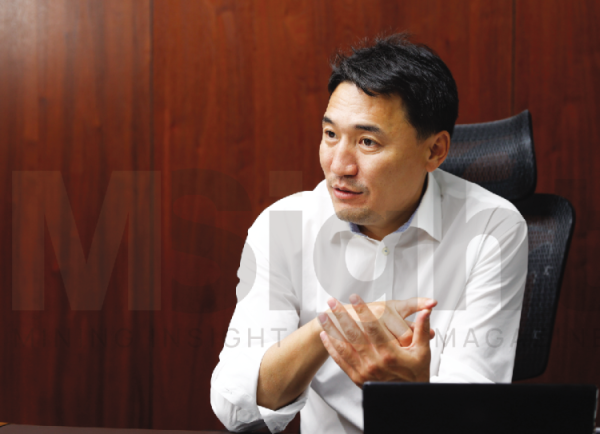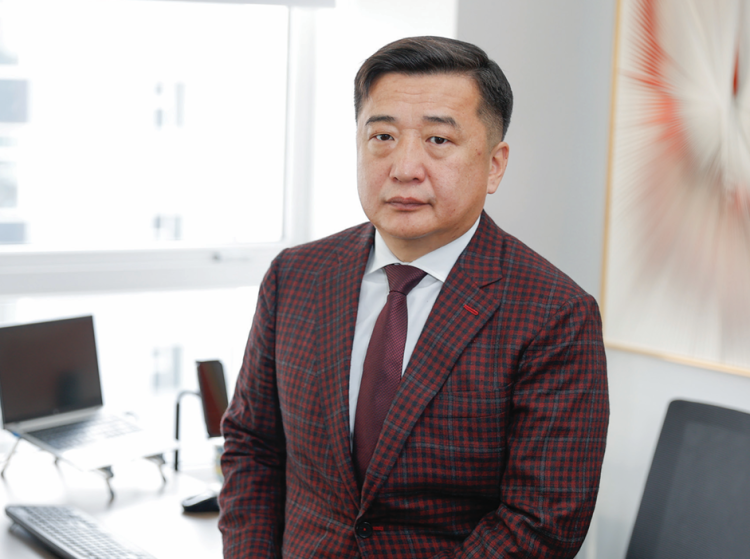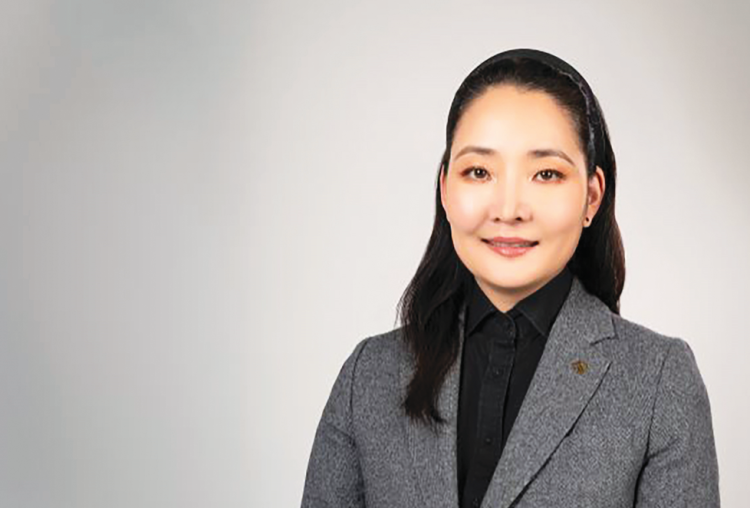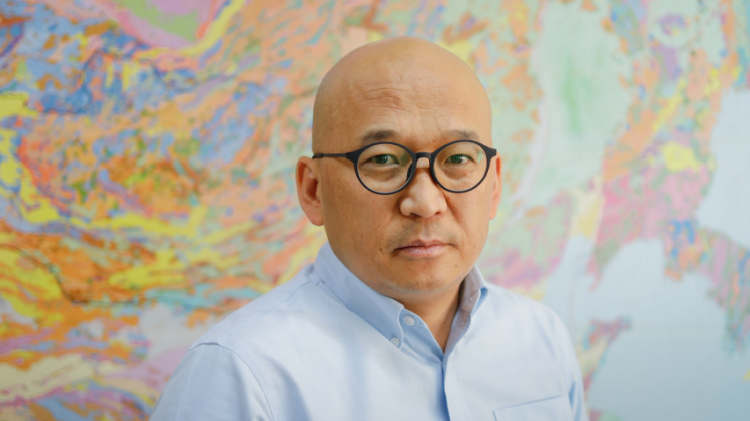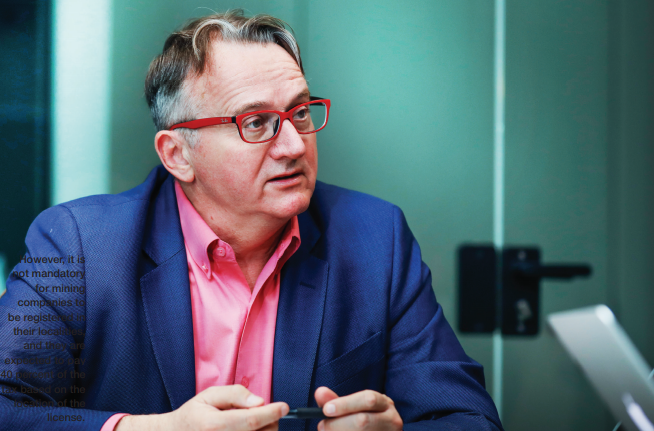 Aranjin Resources Limited is a company that is carrying out copper exploration projects in Mongolia with plans to conduct lithium exploration with Toronto-listed Ion Energy. Although the company was established in 2017, it is managed by an experienced investor who successfully explored Mongolia 10 years ago. Tugsbilig.B spoke with Jeremy South, Chief Financial Officer of Aranjin Resources Limited, regarding their projects in Mongolia.
Aranjin Resources Limited is a company that is carrying out copper exploration projects in Mongolia with plans to conduct lithium exploration with Toronto-listed Ion Energy. Although the company was established in 2017, it is managed by an experienced investor who successfully explored Mongolia 10 years ago. Tugsbilig.B spoke with Jeremy South, Chief Financial Officer of Aranjin Resources Limited, regarding their projects in Mongolia.A company that carried out successful exploration in the past and discovered several deposits in Mongolia a decade ago, is now returning to the country for more exploration projects. It is interesting how you’re seeing the current situation in Mongolia compared to 10 years ago, in terms of exploration and business environment.
I think the current government has probably created the best environment that I’ve seen for some time in Mongolia. And that’s a big reason why we have chosen to continue to invest in the country. The same people behind Aranjin are also behind Steppe Gold. Also, members of the same team are involved with ION energy. So, three companies are working to advance exploration and ultimately produce in the country. The government of the last five years, the current government, the Prime Minister, and the President have been very supportive in encouraging foreign investment and developing a responsible and strong mining industry over the last few years. It has been helped also by the recent agreement with Oyu Tolgoi, where there was a significant agreement made between Rio Tinto and the Mongolian government to amend that agreement and set it on a stronger footing.
How many and what types of mining licenses does Aranjin Resources hold today?
We have essentially two projects. We have the Sharga project, and we also have the Bayan Undur project in Bayankhongor province, but Sharga is the main focus of the company right now in the Gobi Altai region. There are various licenses associated with both projects. We continue to look for other projects. Ideally, we would like to have a strong pipeline of projects. Four to five projects are something that we think is a good number. It’s good to have diversification in your portfolio because exploration is risky. Not every project is going to succeed. Not every project is going to be economically feasible. It’s one thing to find a good ore body. It’s another thing to find an economic ore body. So that combines metallurgy and the ability to mine. There are some of the best projects in the world, some of the best ore bodies in the world that can’t be mined because the altitude or the zones are too wide or too deep. What Aranjin has found at Sharga is at the surface and in shallow zones and thus, very promising. With a focus on two projects at the moment, we have a third potential project that we’re looking at that was announced as Baruun Tal. We are still trying to obtain that license. As well, we have a pipeline of others that we think are also interesting that we’d love to acquire if the government announces tenders and if other companies wish to sell. So far, there’s no update. We announced publicly that we haven’t been able to acquire the license yet. We are continuing to explore options for that.
What was the deciding factor for exploring metals that are on trend today, such as copper, gold, and lithium?
I think that the market has understood the value of battery metals, particularly copper. Copper is one of the most prominent battery metals and there is a very strong demand-supply imbalance emerging in copper. So, not only is copper a critical metal for the battery sector, but the demand-supply balance is very fine. That’s why Rio Tinto is making the move to restructure the deal. I understand how important Oyu Tolgoi is. We understand that with reference to the copper supply, there’s virtually no copper available in China but China has a very large percentage of the world’s copper smelting capacity. So, they need copper. And that’s where I think Mongolia has the benefit and the misfortune of being next to China. It’s a tough country with which to share a border, but it also provides significant economic benefits, if you can provide what China needs, which is copper. And lithium, it’s the same thing. Lithium has a very different supply-demand dynamic. Unlike copper, there’s lots of lithium in China, but it must be the right kind of lithium. So, I think that’s where Mongolia has an advantage in being next to China. China is doing the same thing they did with copper and applying that strategy to lithium. China’s business model is that they over-build processing capacity to capture the supply chain. What they can’t capture is the ability to change their rocks. Mongolia has fantastic minerals. That’s the important thing. I think gold is less important. But you know, Russia invaded Ukraine today, and the gold price is up $50. Gold is a store of wealth rather than a battery metal. But we felt for some time that we wanted to play a major role in the gold industry in Mongolia. There are some great gold projects here. The benefit of gold is that it doesn’t have to leave the country. There’s no export of gold. You just sell to the central bank. Battery metals and copper are a different story. The whole point of the Belt and Road initiative and the idea of having huge resources of copper and lithium next door to China is very compelling. And that’s what we saw as the opportunity to facilitate that. And I think there’s nickel here as well. Copper, lithium, and nickel are all very important in building electric vehicle batteries. There’s an ongoing discussion on the amendment to the Law on Minerals. The country’s adding critical minerals to the bill for the first time. We would like to hear your opinion on what you think about these critical minerals. I don’t have a lot of information on the bill itself. But I think Mongolia has access to and has significant resources and reserves for all critical minerals. The Government must continue to provide the right sort of framework and encourage the right sort of investment. Responsible, environmentally friendly mining is important. It’s about providing the right balance between offering up enough licenses and creating the right fiscal environment. If you overtax, or if the royalties are too high, people won’t come. So, you’ve got to create the right balance between creating the correct framework, encouraging investment. We’d like to see a lot more encouragement of Mongolian investment into the sector as well. We approach our mining investment in Mongolia as partners. We don’t see ourselves as foreigners. We see ourselves as partners. Steppe Gold is a Mongolian company. And 99% of our employees are Mongolian. The people who don’t live there all the time, are trying to bring some best practices, trying to bring that spirit of partnership to what we do. In terms of critical minerals, it’s important that Mongolia not only creates the right framework for investment but also allows the sharing of those benefits with the Mongolian people.
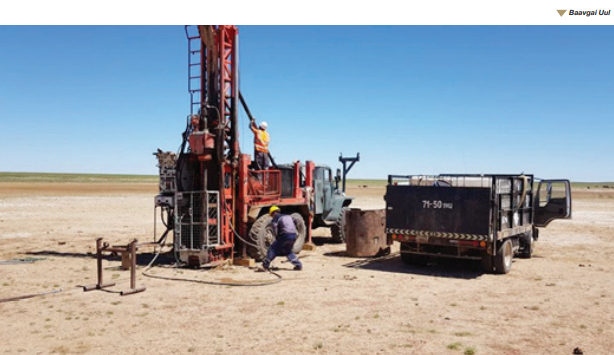
How promising are the ongoing exploration and exploitation projects of Aranjin Resources? Can you share your view on opportunities and potentials in the market right now?
The focus for us is on three projects. There is the Sharga project, which is the most promising. copper project for us. Then there is the Bayan Undur project in the Bayankhongor province. Also most recently, we announced a joint venture with our sister company, ION Energy. There have been copper showings on some of the lithium assets. As a result, we’ve decided to create a partnership where we will explore for copper on their assets, and they’ll explore for lithium on our copper assets because sometimes these two metals occur together. In the case of the Baavhai Uul projects in ION energy, there are some copper and nickel showings there that we think could be very encouraging. I think the focus for us is to raise some capital this year to support a very active drill program for both Sharga and copper at Baavhai Uul, which is the ION Energy’s project, and hopefully as well at the Bayan Undur site, which is our copper-gold project in the Bayankhongor province. We are looking to raise USD 3-5 million this year to support the increased program. Businesses build slowly. When you do exploration, you’ve got to go slowly. You’ve got to have the capital, you’ve got to be very deliberate on how you spend your exploration dollars, follow the right trains, try to maximize your benefits, and set yourself up for success. So, it’s very simple. It’s all about drill bits this year. Drill bits, raising capital, and then building on that. We are very optimistic about Sharga in particular, and the copper showings in Baavhai Uul. If we can start showing that, then the share price grows, and people will see the benefits. And people will come back and invest. We see both Aranjin and Ion as very large companies in the next three to five years. But they’re primarily exploration companies. The idea is to build value through the drill bit. Are there any difficulties in raising capital and investment? How much financing have you raised for these explorations? And how much have you spent so far? We want to hear about your financing plan. We’ve raised USD 3-5 million for Aranjin this year, and probably something similar for ION. It depends on price and a variety of things. But the macro background is very good. The copper price is strong. The same goes for lithium and gold prices. Overall, the commodity prices are strong, so that’s good. We need to create awareness of ourselves. You can’t sell it as a secret. You’ve got to create the right awareness. We’re doing a lot of marketing right now, in order to support the fundraising program. The drills release results, and we will try to build value that way. Fundraising plans will look to raise equity in probably the first half of 2022 for both companies. We’ve raised most of our capital in North America and Europe. But we are also looking to expand our shareholder base here in Mongolia for both companies.
How many drills have you installed so far? Were there any conflicts or disputes with the local administration or the community?
We did about 2000 meters of drilling in the fall of last year. We’ve had a lot of support from the Govi Altai province, and we continue that engagement. It’s very important to communicate to be transparent, and not surprised. So far, so good. We certainly are looking to do the same in Bayankhongor province as we move forward.
Let’s go back to the deal with the ION energy, and at which phase is it at the moment?
It’s in the early stages. We’ve just announced that a few weeks ago. But I think both companies share some of the same management. We’re sister companies, so that was part of the reason why we did the deal. Because there’s a good understanding of the plans, we’re trying to build large exploration portfolios of how these respective assets raise meaningful capital and ultimately, to put some of these projects into production. As for Steppe Gold, unlike a lot of foreign companies, we’ve been in production. There aren’t many foreign-funded companies that come to Mongolia and produce gold. And we’ve done that. So, the aim is to try and do something similar here and build value over the near medium term.
The industry experts are expecting ION energy to focus more on lithium. So, what is your opinion on the operation of these lithium areas?
ION is on lithium and Aranjin is on copper. That’s pretty clear. The idea is that there is a partnership between the two companies that allows us to have some synergies, whereby we can explore for copper on their assets, and they explore for lithium on ours. ION Energy has focused on lithium areas and discovering brine lithium assets. The synergy allows you to make your exploration dollar to go further.
You’ve been here in Mongolia for about ten years now, so we want to hear about your view going forward. Because after all, for the last 10 years, there’s been significant progress in the geological exploration industry. How do you see the potential of the overall market and mining industry in Mongolia?
I’ve never been more optimistic. The government is the most supportive and the most transparently supportive. Also, I think the government is balanced. The opposition parties, everyone I think, are united in creating the right foundation. The OT deal, the recent critical minerals law, the strategic assets, and so on. This is the strongest support that I’ve seen. I expect Mongolia to be successful as a country. In an environment surrounded by Russia and China, Mongolia must create its best chance for success, and it can’t be reliant on imports. So to balance that, they need to have a strong export economy. It must have a strong gold economy. Because today is a great example of why you have gold. We see geopolitical risk and a high inflation environment globally.
Mongolia might have a great technology industry one day, but it’s got these wonderful gifts, some of the best geology in the world. They need to generate, monetize, democratize, and support the mining industry. That’s not just allowing deposits to be exploited, it’s about infrastructure. So, you need to have power at OT and ETT.
You’d have the right roads; you’d have the right trains. They are all coming down. You also need to have renewable energy, including solar power and wind power. You need to start developing downstream processing. It makes sense for there to be a gold refinery in Mongolia. It makes sense now. Mongolia exports lots of raw materials, such as unwashed coal. It needs to wash coal. It probably needs to have a copper refinery, so it can develop the export of value-added products, rather than concentrate. Right now, Mongolia is just exporting low-value-added products. So that’s the logical next step. Not just developing the raw material and digging it out of the ground and putting it on a train but developing value-added products. And then the infrastructure. The country already has a lot of talent. One of the benefits of Oyu Tolgoi and our company Steppe Gold is that we’ve developed people. Developing skills is how it all snowballs. Once you have the right talent, then the money comes, and then more talent comes, and then more money comes. And that’s the virtue of the circle. If you look at successful mining countries around the world, that’s what they’ve done. They’ve moved past just basic geology and basic mining. They’ve gone on to build infrastructure, valueadded processing, and downstream processing. Currently, we at Steppe Gold are producing a dirty gold bar. The gold bar that contains silver and the unrefined gold bar goes to the central bank. They put it on a plane to a refinery somewhere in Europe or Japan. It makes sense for there to be a refinery here.



